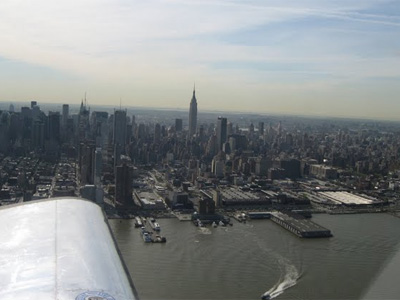
How can two aircraft collide with each other in New York City airspace as two did Saturday over the Hudson River? Aren’t air traffic controllers keeping them apart?
No.
There’s a section of New York where pilots can fly without being under the control of air traffic controllers. It’s no different than the area around Minneapolis-St. Paul, where there has also been the occasional mid-air collision.
As former CNN anchor — and pilot — Miles O’Brien notes, it’s not inherently unsafe, but it does require pilots to pay attention to what’s around them.
One of the busiest spots in this busy corridor is right near the Heliport at 30th St. on a pier on the Manhattan side of the river. The tour choppers there come and go frequently. They take off, go straight across the river and then turn down to the south for a trip to the statue. The chopper involved in this collision was doing just that. The plane was flying south – unsure what speed or altitude.
But here is an important point: it was a Piper PA-32 – A Cherokee Six or Saratoga (the sort of plane John Kennedy Jr. flew to his demise). It is a low wing airplane with a rather long nose. In level flight, downward visibility for the pilot is not so good. So the ascending chopper might very well have been completely obscured by the wing and engine cowling.
Why would private pilots fly in this busy corridor? The Statue of Liberty, and the breathtaking views, of course. Who wouldn’t want to see those sites by air?
This is not, by the way, the same area where former New York Yankee Cory Lidle died in a plane crash. That was the East River corridor of New York, where airspace restrictions create a boxed-in canyon for pilots, forcing them to turn around in tight quarters.
There is no similar situation over the Hudson River.
Why did the aircraft crash? After an extensive investigation, the answer is likely to be the obvious one: They just didn’t see each other.
(Photo: Flying the New York VFR corridor, by Ted Chang)
